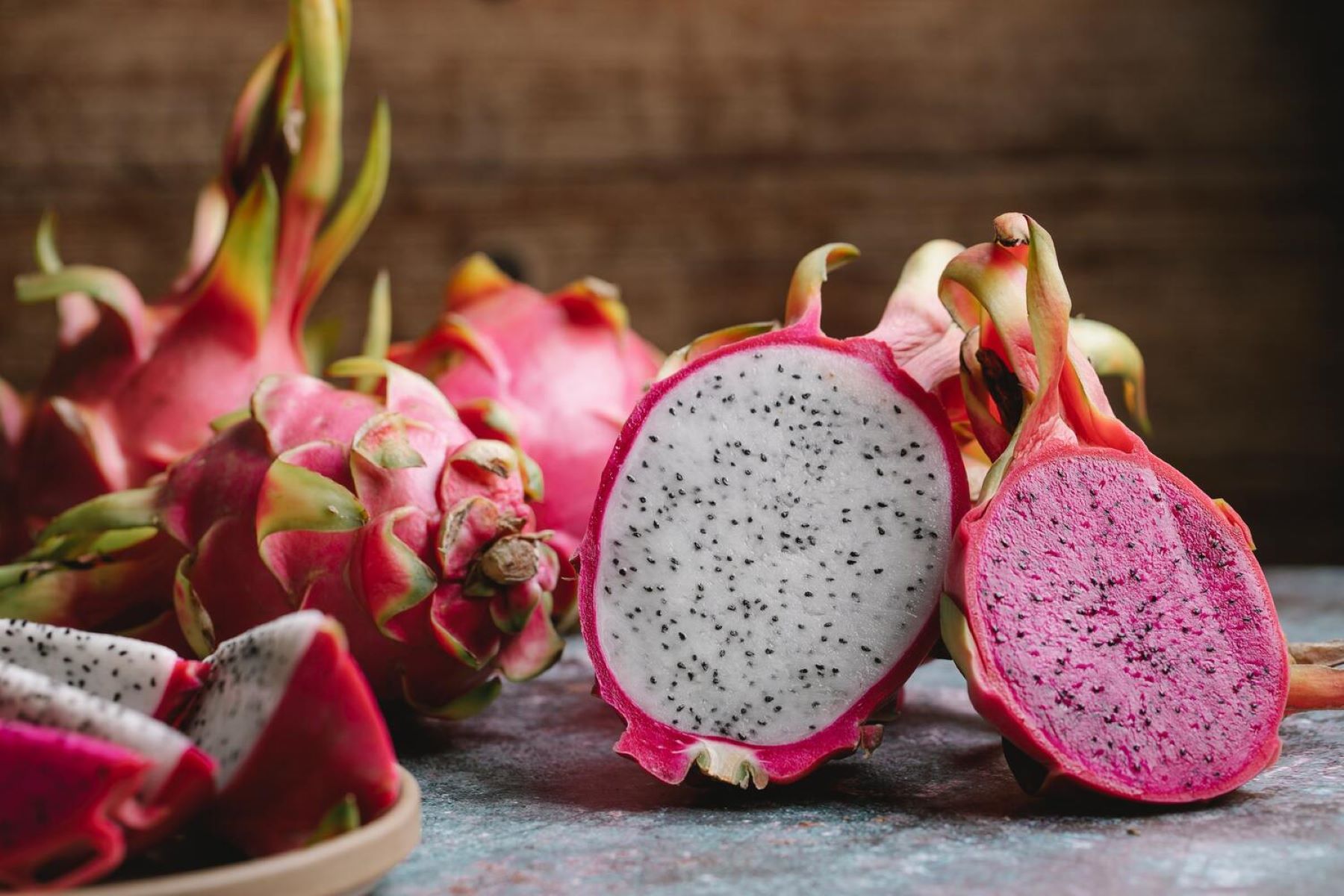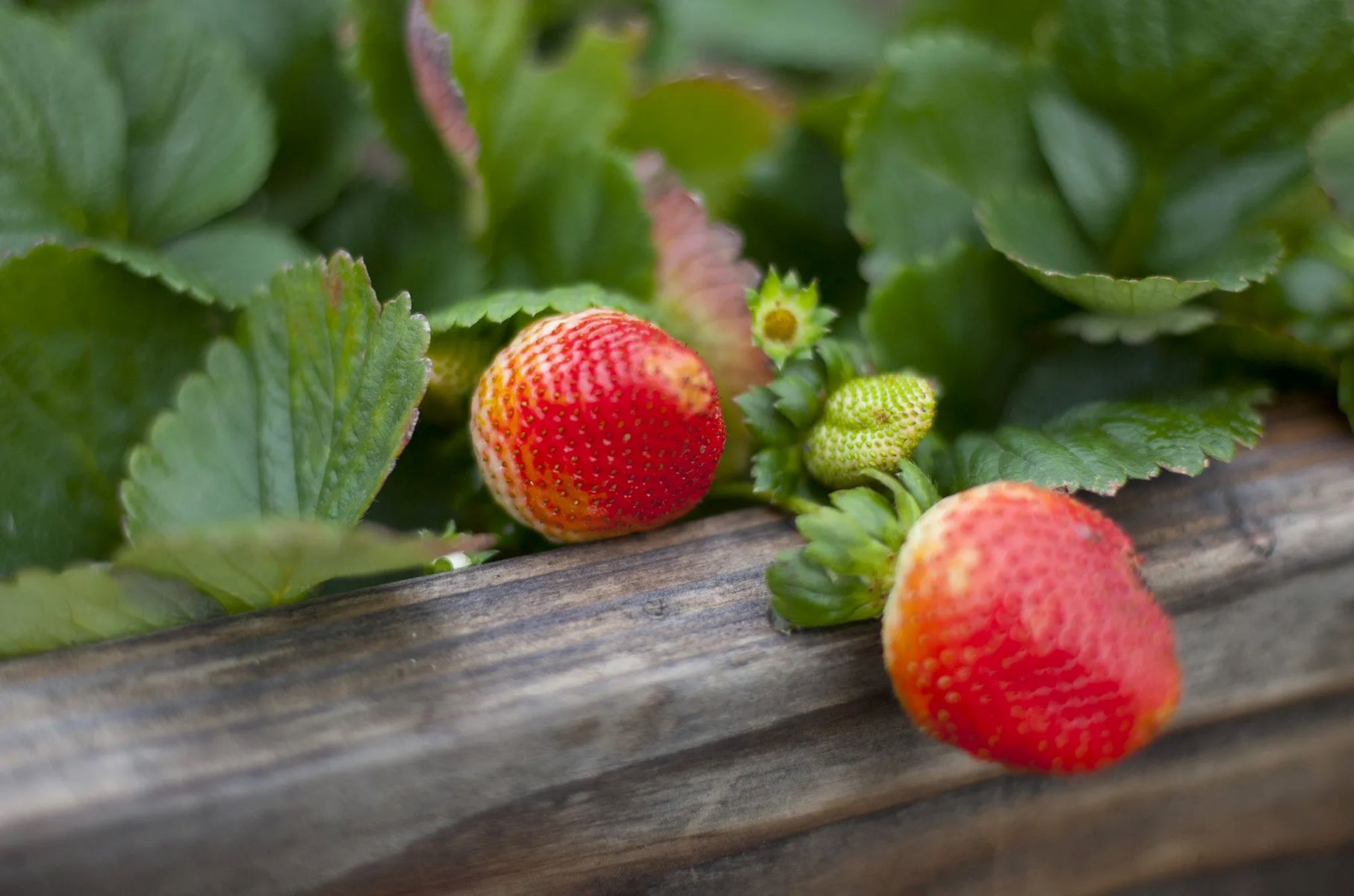Home>Food and Cooking>The Ultimate Guide To Preserving Dragon Fruit Freshness


Food and Cooking
The Ultimate Guide To Preserving Dragon Fruit Freshness
Published: February 19, 2024
Discover the best techniques for preserving the freshness of dragon fruit with our comprehensive guide. Learn expert tips and tricks for storing and enjoying this exotic fruit. Ideal for food and cooking enthusiasts.
(Many of the links in this article redirect to a specific reviewed product. Your purchase of these products through affiliate links helps to generate commission for Regretless.com, at no extra cost. Learn more)
Table of Contents
Introduction
Dragon fruit, also known as pitaya, is a visually stunning and delicious tropical fruit that has gained popularity for its unique appearance and refreshing taste. With its vibrant pink or yellow skin and speckled flesh dotted with tiny black seeds, dragon fruit is not only a feast for the eyes but also a delightful treat for the palate. Whether enjoyed on its own, added to smoothies, or incorporated into exotic fruit salads, the versatility of dragon fruit makes it a sought-after ingredient in various culinary creations.
In this comprehensive guide, we will delve into the art of preserving dragon fruit freshness, ensuring that this delectable fruit remains at its peak quality for as long as possible. From understanding the intricacies of dragon fruit to exploring the factors that influence its freshness, we will equip you with valuable insights and practical tips to extend the shelf life of this exotic fruit. Whether you are a seasoned dragon fruit enthusiast or a curious newcomer, this guide will empower you to make the most of this tropical treasure.
Join us on a journey through the enchanting world of dragon fruit as we unravel the secrets to selecting, storing, and preserving its freshness. By the end of this guide, you will possess the knowledge and expertise to savor the succulent flavors of dragon fruit at their finest, elevating your culinary experiences and embracing the allure of this captivating fruit. Let's embark on this flavorful expedition and unlock the secrets to preserving the freshness of dragon fruit, ensuring that every bite is a delightful celebration of tropical indulgence.
Read more: How To Cut Dragon Fruit
Understanding Dragon Fruit
Dragon fruit, scientifically known as Hylocereus undatus, belongs to the cactus family and is native to Central America. This exotic fruit is characterized by its vibrant, leathery skin and unique appearance, which sets it apart from other tropical fruits. The flesh of the dragon fruit can be either white or red, speckled with tiny, edible black seeds, creating a visually striking contrast that adds to its allure.
The flavor profile of dragon fruit is often described as a delicate blend of sweetness with subtle hints of tanginess, reminiscent of a cross between a pear and a kiwi. The texture of the flesh is refreshingly crisp, offering a satisfying crunch that further enhances the overall sensory experience.
One of the most fascinating aspects of dragon fruit is its remarkable nutritional content. This exotic fruit is a rich source of essential vitamins, including vitamin C, vitamin B, and antioxidants, making it a valuable addition to a balanced diet. Additionally, dragon fruit is low in calories and high in fiber, contributing to its reputation as a health-conscious choice for those seeking nutritious and delicious dietary options.
In terms of culinary versatility, dragon fruit is a versatile ingredient that can be enjoyed in various forms. Whether consumed fresh, blended into smoothies, incorporated into fruit salads, or used as a decorative garnish, the adaptability of dragon fruit makes it a popular choice among chefs and home cooks alike.
Furthermore, dragon fruit is celebrated for its potential health benefits, including its ability to support digestion, boost immunity, and promote overall well-being. Its antioxidant properties and hydrating qualities have also contributed to its reputation as a rejuvenating fruit with potential skincare benefits.
In essence, understanding dragon fruit goes beyond its physical attributes and extends to its cultural significance and culinary potential. This captivating fruit embodies a harmonious blend of visual appeal, nutritional value, and culinary versatility, making it a prized addition to the world of tropical fruits. As we continue our exploration of preserving dragon fruit freshness, this foundational understanding of the fruit will serve as a springboard for our journey into the art of savoring and preserving its delightful qualities.
Factors Affecting Dragon Fruit Freshness
The freshness of dragon fruit is influenced by a myriad of factors that collectively determine its quality and shelf life. Understanding these factors is essential for preserving the fruit's optimal freshness and ensuring a delightful culinary experience. Let's explore the key elements that impact the freshness of dragon fruit:
-
Ripeness: The stage of ripeness at which dragon fruit is harvested significantly affects its freshness. Overripe fruit may exhibit signs of softness and excessive browning of the flesh, indicating a decline in freshness. Conversely, underripe fruit may lack the desired sweetness and succulence, impacting its overall quality.
-
Handling and Transportation: The manner in which dragon fruit is handled and transported from the point of harvest to the consumer plays a crucial role in preserving its freshness. Proper handling practices, including careful packing and temperature-controlled transportation, are essential to minimize physical damage and maintain the fruit's pristine condition.
-
Storage Conditions: The storage environment directly impacts the freshness of dragon fruit. Exposure to excessive moisture or prolonged periods of high temperature can accelerate spoilage, leading to a decline in freshness. Additionally, inadequate ventilation and exposure to ethylene-producing fruits can hasten the ripening process, affecting the fruit's shelf life.
-
Bruising and Damage: Physical damage, such as bruising or punctures in the skin, can compromise the freshness of dragon fruit. These imperfections create entry points for microorganisms, hastening the deterioration of the fruit and diminishing its overall quality.
-
Microbial Growth: The presence of microorganisms, including bacteria and fungi, can contribute to the degradation of dragon fruit freshness. Factors such as improper sanitation during handling, storage, and display can facilitate microbial growth, leading to spoilage and a reduction in the fruit's freshness.
-
Exposure to Light: Prolonged exposure to direct sunlight or artificial light can impact the freshness of dragon fruit. Ultraviolet radiation and heat generated by light sources can accelerate the ripening process and lead to premature spoilage, affecting the fruit's texture and flavor.
Understanding these factors is pivotal in implementing effective strategies to preserve the freshness of dragon fruit. By addressing these elements proactively, consumers and retailers can prolong the shelf life of dragon fruit, ensuring that each bite is a delightful celebration of its natural splendor and delectable qualities.
Tips for Selecting Fresh Dragon Fruit
When it comes to selecting fresh dragon fruit, paying attention to certain visual and tactile cues can significantly enhance the likelihood of choosing a high-quality specimen. Here are some valuable tips to consider when selecting fresh dragon fruit:
-
Color and Texture: Opt for dragon fruit with vibrant, evenly colored skin. The presence of bright hues, such as deep pink or vivid yellow, often indicates optimal ripeness. Additionally, the skin should exhibit a slight firmness, yielding gently to pressure without feeling excessively soft or mushy.
-
Firmness: Gently press the skin of the dragon fruit to assess its firmness. A ripe dragon fruit should yield slightly to pressure, similar to the texture of a ripe avocado. Avoid fruits that feel excessively soft, as they may be overripe and prone to spoilage.
-
Lack of Blemishes: Inspect the surface of the dragon fruit for any blemishes, bruises, or discolorations. A fresh and high-quality dragon fruit should have a smooth, unblemished skin, free from any signs of damage or decay.
-
Fragrance: While the exterior of dragon fruit may not emit a strong aroma, a subtle, sweet fragrance near the stem end can indicate ripeness. However, an overpowering or unpleasant odor may signal overripeness or spoilage.
-
Size and Weight: Consider the size and weight of the dragon fruit. Look for fruits that feel heavy for their size, as this often indicates a higher water content and juiciness, contributing to a more succulent and flavorful eating experience.
By incorporating these tips into your selection process, you can increase the likelihood of choosing fresh, high-quality dragon fruit that promises a delightful culinary experience. Whether you are preparing a refreshing fruit salad, blending a vibrant smoothie, or savoring the fruit on its own, selecting the finest dragon fruit sets the stage for a truly enjoyable and flavorful indulgence.
Storing Dragon Fruit Properly
Proper storage is paramount in maintaining the freshness and quality of dragon fruit. By implementing appropriate storage practices, you can prolong the shelf life of this exotic fruit, ensuring that it retains its delightful flavor and texture. Here are essential guidelines for storing dragon fruit properly:
-
Room Temperature: Dragon fruit can be stored at room temperature if it is to be consumed within a few days. Choose a well-ventilated area away from direct sunlight and heat sources. Avoid placing the fruit near ethylene-producing items, such as bananas or apples, as this can accelerate the ripening process.
-
Refrigeration: If you intend to store dragon fruit for a longer duration, refrigeration is the ideal option. Place the whole, uncut fruit in the refrigerator's crisper drawer, which provides a slightly higher humidity level. Ensure that the fruit is not exposed to extremely low temperatures, as this can cause chilling injury and affect its quality.
-
Proper Packaging: To prevent moisture loss and protect the fruit from physical damage, consider placing the dragon fruit in a perforated plastic bag before refrigerating it. The perforations allow for adequate air circulation while safeguarding the fruit from excessive moisture.
-
Avoiding Compression: When storing dragon fruit in the refrigerator, refrain from stacking heavy items on top of it, as this can lead to bruising and damage. Store the fruit in a manner that minimizes pressure on its delicate skin, preserving its visual appeal and structural integrity.
-
Optimal Ripeness: If the dragon fruit is not fully ripe at the time of purchase, allow it to ripen at room temperature before refrigerating. Once the fruit reaches the desired ripeness, transfer it to the refrigerator to maintain its freshness and flavor.
By adhering to these storage guidelines, you can effectively preserve the quality of dragon fruit, ensuring that it remains at its peak freshness for an extended period. Whether you are planning to enjoy the fruit as a standalone snack, incorporate it into culinary creations, or savor its refreshing taste in various recipes, proper storage practices play a pivotal role in enhancing the overall experience of indulging in this tropical delight.
Preserving Dragon Fruit Freshness
Preserving the freshness of dragon fruit is essential to prolong its shelf life and maintain its delightful qualities. By implementing effective preservation strategies, you can ensure that this exotic fruit retains its succulent texture, vibrant flavor, and visual appeal for an extended period. Here are valuable techniques for preserving the freshness of dragon fruit:
1. Gentle Handling
Handle dragon fruit with care to minimize physical damage and bruising, which can hasten spoilage. Avoid squeezing or pressing the fruit excessively, as this can lead to bruising and compromise its freshness.
2. Prompt Refrigeration
After purchasing or harvesting dragon fruit, promptly refrigerate it to slow down the ripening process and preserve its optimal freshness. Refrigeration helps maintain the fruit's texture and flavor, extending its shelf life.
3. Proper Packaging
When storing dragon fruit in the refrigerator, place it in a perforated plastic bag to protect it from moisture loss while allowing for adequate air circulation. This packaging method helps safeguard the fruit from dehydration and maintains its crispness.
4. Minimal Exposure
Minimize the fruit's exposure to light and air to prevent premature ripening and deterioration. Store the dragon fruit in a cool, dark place to preserve its natural freshness and vibrant color.
5. Check for Spoilage
Regularly inspect stored dragon fruit for any signs of spoilage, such as mold growth, unusual odors, or excessive softening. Promptly remove any spoiled fruit to prevent the spread of deterioration to the remaining specimens.
6. Controlled Ripening
If you have unripe dragon fruit, allow it to ripen at room temperature before refrigerating it. This controlled ripening process ensures that the fruit reaches its peak flavor and sweetness before being stored for an extended period.
By incorporating these preservation techniques into your handling and storage practices, you can effectively prolong the freshness of dragon fruit, allowing you to savor its delightful qualities over an extended duration. Whether enjoyed as a standalone snack, incorporated into culinary creations, or blended into refreshing beverages, preserved dragon fruit offers a delectable and visually captivating addition to your culinary repertoire.
Conclusion
In conclusion, the art of preserving dragon fruit freshness is a captivating journey that intertwines culinary appreciation with practical preservation techniques. As we have delved into the nuances of understanding dragon fruit, explored the factors influencing its freshness, and uncovered valuable tips for selecting, storing, and preserving this exotic fruit, a profound appreciation for its allure and versatility has emerged.
The vibrant world of dragon fruit, with its visually striking appearance and delicate flavor profile, beckons enthusiasts and culinary explorers to embrace its tropical charm. From the moment of selecting a ripe and luscious specimen to the careful orchestration of storage and preservation, each step in the process contributes to the preservation of the fruit's natural splendor and delectable qualities.
By understanding the factors that influence dragon fruit freshness, including ripeness, handling, storage conditions, and exposure to light, we gain insight into the delicate balance required to maintain the fruit's optimal quality. The tips for selecting fresh dragon fruit serve as a guiding light, empowering consumers to make informed choices and elevate their culinary experiences with the finest specimens.
Furthermore, the significance of proper storage practices cannot be overstated, as they play a pivotal role in extending the shelf life of dragon fruit and preserving its succulent texture and refreshing flavor. From room temperature storage to the nuances of refrigeration and packaging, each aspect contributes to the preservation of the fruit's natural allure.
As we embrace the art of preserving dragon fruit freshness, we are reminded of the harmonious fusion of culinary delight and natural splendor that this exotic fruit embodies. Whether enjoyed in its unadorned splendor, incorporated into vibrant culinary creations, or savored in refreshing beverages, preserved dragon fruit offers a delightful celebration of tropical indulgence.
In essence, the journey of preserving dragon fruit freshness transcends the realm of culinary preservation and emerges as a testament to the appreciation of nature's bountiful offerings. Through mindful selection, gentle handling, and meticulous preservation, we honor the essence of dragon fruit, ensuring that each bite is a delightful celebration of its vibrant flavors and captivating allure. As we conclude this flavorful expedition, let us carry forth the knowledge and appreciation gained, embracing the art of preserving dragon fruit freshness as a testament to the enduring charm of this tropical treasure.













